Australian Weather Facts
Australia has its share of climate extremes and interesting weather facts, in this section we'll have a look at some of them.
The highest temperature ever recorded in Australia was at Cloncurry in Queensland on the 16th of January 1889, it was 53.1 degrees Celsius.
Although still considered, by most people, as the highest temperature ever recorded in Australia, it has to be noted that this Cloncurry temperature is no longer considered to be an "official" temperature reading because the equipment used would not have been satisfactory by today's standards.
The "official" highest temperature recorded in Australia was at Oodnadatta in South Australia on the 2nd of January 1960, it was 50.7 degrees Celsius.
lowest temperature ever recorded in Australia was at Charlotte Pass in New South Wales on the 29th of June 1994, it was minus 23 degrees Celsius.
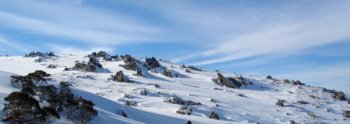
The longest heatwave in the world was at Marble Bar in Western Australia from the 31st of October 1923 to the 7th of April 1924, 160 days of temperatures of or over 37.8 degrees Celsius (100 degrees Fahrenheit) The highest temperature recorded during the heatwave was on the 18th of January 1924, it was 47.5 degrees Celsius. Now that's a climate extreme and an interesting weather fact!
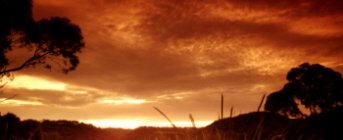
The greatest recorded temperature range in Australia is at White Cliffs in New South Wales where the maximum recorded temperature has risen to over 50 degrees Celsius and the minimum recorded temperature has fallen to minus 7 degrees Celsius.
The highest temperature recorded in an Australian capital city was in Adelaide on the 12th of January 1939, it was 47.6 degrees Celsius.
In early 2009 we had a record temperature run here in Adelaide and in a lot of the south eastern part of Australia.
Places all over the south east had record temperatures including Adelaide (where we live); we reached the third highest temperature ever recorded in Adelaide at 45.7 degrees Celsius (about 114 Farenheit) and the Victorian capital of Melbourne had their highest temperature on record at 46.4 degrees Celsius (about 115 Farenheit).
Here in Adelaide we had 6 days of over 40 degrees Celsius and 4 of those were over 43 degrees Celsius; Bloody hot in any man's language let me tell you.
Both Adelaide and Melbourne broke records for the most consecutive days over 40 degrees Celsius (104 Farenheit)
The lowest temperature recorded in an Australian capital city was in Canberra on the 11th of July 1971, it was minus 10 degrees Celsius.
The worst dust storm to hit an Australian capital city was in Melbourne in February 1983, it lasted for around 30 minutes and blacked out the centre of the city almost totally.
The wind record in Australia was taken at Learmonth (south of Exmouth) in Western Australia on the 22nd of March 1999 during Cyclone Vance, winds gusted to 267 kilometres per hour (166 mp/h).
The wettest town (on average) in Australia is Tully in north Queensland with an annual average rainfall of 4,204mm.
The highest rainfall recorded in a day was at Beerwah in Queensland on the 3rd of February 1893, it received 907mm
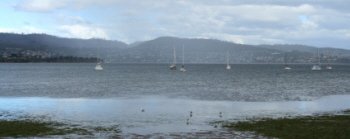
Tasmania has the wettest climate in Australia with over 150 days of rain per year making it the state with the highest number of rain days per year.
Australia's most famous cyclone is Cyclone Tracy which hit Darwin in the Northern Territory on Christmas Eve 1974, forty-nine people died in the city and sixteen more were killed at sea, over 600 people were injured. One hundred and ninety-five millimetres of rain fell in less than nine hours and the instrument measuring wind speed broke down after taking a reading of 217 kilometres per hour (136 mph). Over 80% of the city was destroyed and Darwin was evacuated.
But Cyclone Tracy is not the worst cyclone to strike Australia, that dubious honour goes to Cyclone Mahina which hit Cape York in Queensland in March 1899, killing over 400 people including the crews of pearling fleet vessels, the largest death toll of any natural disaster in Australian history.
Floods are one of the weather facts that happen as a consequence of our diverse climate conditions and every year cause millions of dollars damage to land, crops, buildings, and infrastructure, such as roads and railways, flooding is Australia's costliest form of natural disaster.
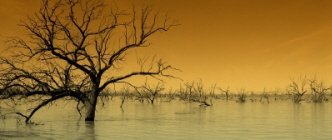
The flooding in January of 1974, after Cyclone Wanda caused heavy rain in Brisbane and a lot of south east Queensland and northern
New South Wales. A third of Brisbane's city centre and some suburbs were badly flooded.
Fourteen people lost their lives and over 300 people were injured. 1,600 homes were submerged and Fifty-six were washed away.
The flooding in April of 1990 covered over one million square kilometres of Queensland, New South Wales and a small area
of Victoria.
Six people lost their lives and around 60 people were injured. 2,000 homes were flooded.
The flooding that hit Queensland from December 2010 through to early 2011 was devasting; 35 people lost their lives with another 200,000 affected. Three quarters of Queensland was declared a disaster zone.
Watching the huge wall of water rolling down the street in Toowoomba was unbelievable, I can't imagine what it was like for the people who live there. I'm sure all Australians felt great sadness and sorrow the same as we did when watching that and the unbelievable images of people stranded on the roofs of their houses, in their cars or precariously clinging to something waiting to be rescued.
At the other end of weather facts are droughts. Over the years in Australia there have been numerous droughts, too many to mention individually here.
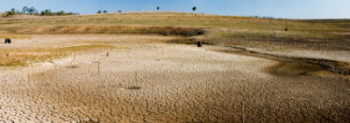
Droughts in Australia affect everyone to some degree, whether you are the people who live and work on the land (in which case the drought threatens your very livelihood) or you live in one of the cities (in which case you pay higher prices for your meat, groceries etc. and you will have water restrictions) if you live in Australia you will be affected by a drought at some time.
Quite possibly the worst of Australia's weather facts and climate extremes in Australia is the bushfires, Australia has a history of severe bushfires.
The bushfire of the 7th of February 1967 in Tasmania burned over 260,000 hectares in five hours. One of the 110 fires burning made its way to the western suburbs of Hobart. Sixty two people lost their lives and around 1,400 homes and buildings were destroyed.
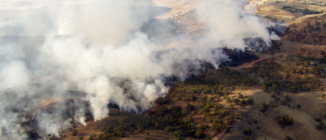
The bushfire of the 16th of February 1983 called the Ash Wednesday fires burned across Victoria and South Australia. Seventy-five people lost their lives and around 2,500 houses were destroyed.
The bushfire of mid-January 2003 in the Australian Capital Territory caused by extreme weather conditions led to many outbreaks in Namadgi National Park to the south of Canberra, thousands of hectares of forest and parks lands were burnt. On the afternoon of Saturday the 18th of January, the fire hit the Canberra suburbs. Four people lost their lives.
The worst bushfires in Australia's history devastated Victoria in February 2009. The fires where the largest natural disaster in Australia and tragically caused a loss of 173 life's and destroyed over 2,000 homes.
Australians everywhere were heartsick at the loss and suffering of our friends and fellow Australians.
I'm not sure if this would be considered a climate extreme or just an interesting weather fact, in July of 1997 snow fell on Uluru (Ayers Rock).
Some of the information presented on this page was gathered from the Bureau Of Meteorology and The Gungahlin Weather Centre..... Thank you to them both.
You can go to the Gungahlin Weather Facts and Figures Page for more interesting weather facts.
Return from Weather Facts to Australian-Information-Stories home page


